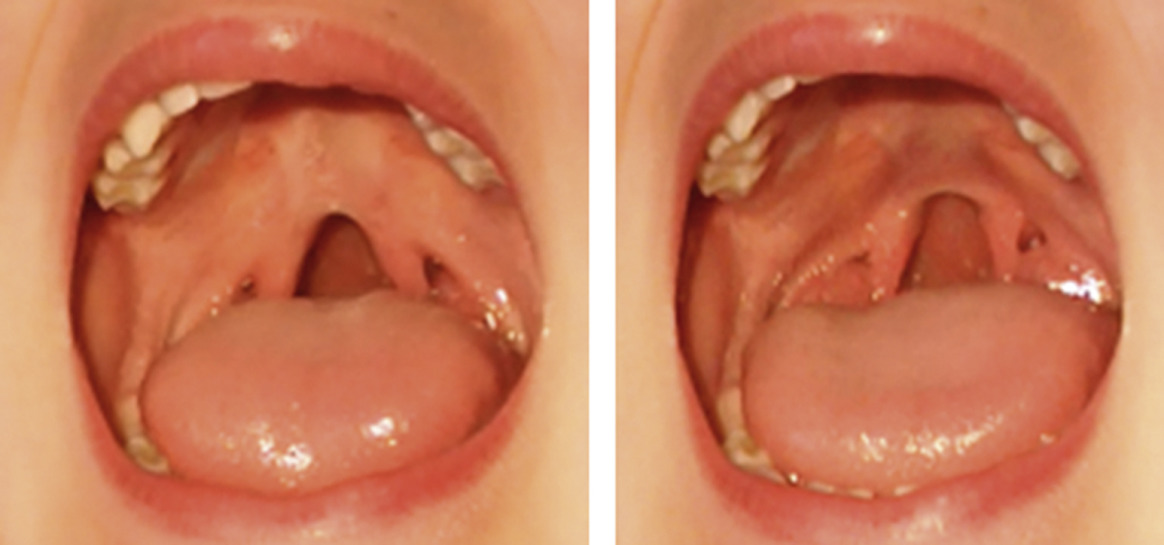Velopharyngeal insufficiency is characterized by a hypernasal resonant voice, nasal emission of air, nasal turbulence, and an inability to produce explosive sounds requiring buccal compression.
Velopharyngeal function consists of a three-dimensional mechanism that involves the soft palate and the lateral and posterior pharyngeal walls. If it stops working properly, it prevents the passage of food or air to the nasopharynx during swallowing or phonation.
Velopharyngeal insufficiency can be caused by anatomical alterations such as clefts, open palate, submucous or post-surgical palate due to residual spaces, mechanical interference such as adenoids, tonsils or flanges in the pillars, due to palatopharyngeal disproportion as occurs in the short palate.
When the soft palate is not working properly, paralysis of the soft palate muscles can cause vomiting of food into the nasal cavity and nasal pronunciation of words.
It occurs when the closure of the sphincter is mainly due to posterior movement of the soft palate. In this group, a large part of the pharyngeal wall contacts the soft palate and at this point there is associated little movement of the lateral pharyngeal wall medially.
The soft palate is the structure of the oral anatomy composed of soft tissue, the vast majority of which is muscle. In its general functioning, the work performed by the tensor muscle of the soft palate, called peristaphylin, which tenses or relaxes it and intervenes in the opening of the tube, is essential.
To stimulate the soft palate, hold the tip of the tongue between the teeth and simultaneously pass the saliva without letting go of the tongue. Lying in bed, look at your feet and pass your saliva. Place the tip of the tongue behind the lower incisors, pucker the corners of the lips, and forcefully swallow.
For the diagnosis of this disease, several studies are available to assess velopharyngeal closure, such as:
- Videofluoroscopy.
- Videonaspharyngoscopy.
- Axial computed tomography.
- Magnetic nuclear resonance.
Treatments in the inflamed palate:
- Place something cold on the inflamed area.
- Consume cold water, natural juices or shakes.
- Eat soft foods that do not damage the palate.
- Eating cold or warm dishes.
- Avoid foods that are too spicy, acidic or crunchy so as not to rub the area.






